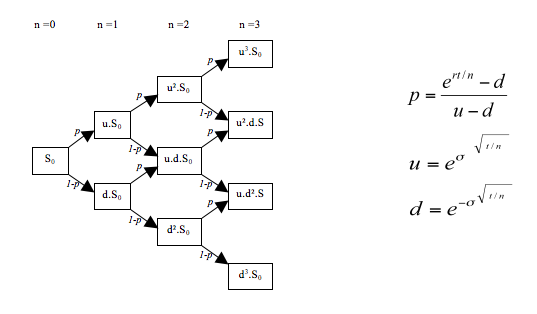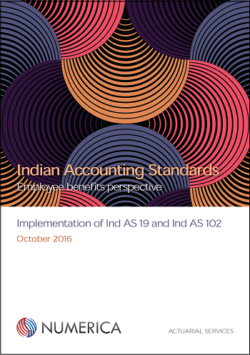
With the arrival of Ind AS, companies need to value and account for their stock option schemes using the fair value method. There are more ways in which Ind AS will affect companies running employee stock option schemes. These are described in more detail here. This post only focusses on methods to carry out fair valuation of employee stock options.
Background
Stock option plans have been highly successful globally in aligning the interests of the employees with those of the shareholders. In India too, many companies offer stock options to remunerate their employees.
Grant of stock options to employees is a cost to the company when they are granted, or a liability that is yet to be settled from a company’s perspective. Globally, there are accounting standards that deal specifically with the accounting of employee stock options; e.g. IFRS 2 and ASC 718 (US GAAP). But the situation in India hasn’t been so clear. There hasn’t been a comprehensive accounting standard dealing with accounting standards. There are a range of rules and guidelines, that affect different companies differently. For example, listed companies are governed by SEBI guidelines and the ICAI has published Guidance Note 18 on the matter. But each of them lack uniformity of application, or the authority of an accounting standard.
For companies falling under the purview of the Indian Accounting Standards, Ind AS 102 prescribes that the valuation of employee stock options be done as per the fair value method only. A detailed description of how the companies will be affected by Ind AS can be found here.
How is fair value different from intrinsic value
Thankfully, a simple relationship exists which will help in understanding the fair value concepts below:
Fair value = Intrinsic value + Time value
Time value can only be non-negative. Therefore, companies using the intrinsic value method understate the value of their stock options.
The general approach is to calculate the fair value using one of the methods described below, and then time value is the difference between fair value and intrinsic value
Methods for fair valuation of employee stock options
Fair value, as required under Ind AS 102, can be calculated using any of the following methods, depending on the desire for accuracy and complexity of the options:
1. Black Scholes formula
This is the most widely used method and is considered appropriate for small schemes with simple rules. The formula is (source: Wikipedia):

The parameters here are share price (S), exercise price (K), volatility (sigma), duration till exercise (T) and risk free rate (r).
The primary advantage of this method is it’s simplicity. Once the values of the parameters are known, the option price can be easily calculated.
The drawback of this method is that it may not allow for any complicated features; e.g. where the exercise price could vary based on some formula. The method assumes a lognormal distribution of share price, which may not be correct under some circumstances, e.g. when the markets are stressed.
Black Scholes formula is most widely used in India for valuation of employee stock options. However, companies need to understand the limitations and make sure that this method is appropriate, given their own circumstances.
2. Binomial Model
The binomial model is more advanced and involves the use of computational techniques. In this model, the share price is projected from the date of grant to the date of exercise using ‘up’ and ‘down’ probabilities as shown in the picture below (source: Wikipedia):

The probabilities are estimated from the share price volatility assumption.
The binomial method is quite robust and can allow for more complicated rules and events during the vesting period (e.g. probability of leaving the service).
The main disadvantage is that it also assumes a lognormal distribution of share price.
In spite of being simple and more robust compared to the Black Scholes formula, the use of binomial model is very restricted in India. In our view, this should be the model of choice, even for simpler schemes.
3. Monte Carlo Method
As with Binomial model, this method also involves projecting the share price. However, the projection of share price is not restricted by pre-defined up and down probabilities. Instead, the share price is ‘sampled’ from the chosen share price distribution.
The method involves projecting the share price under hundreds of different scenario, each constructing a unique ‘path’.
The Monte Carlo method is the most accurate of all option pricing methods. It can allow for any level of complexity of the rules of the scheme, and deal with the pre-vesting events. It can deal with the share price distributions which are not lognormal, thereby giving more accurate results. This could be especially useful when the capital markets are stressed and the lognormal distribution may not apply.
The downside of this method is that the results will take time, because of the computation complexity involved. It could also be somewhat difficult to understand.
Monte Carlo methods are hardly ever used in Indian markets. In our view, these methods should be used more often, especially now when the computational power is much less of a concern.
Download our guide on transition to Ind AS from employee benefits perspective:


May 24, 2018 at 10:39 pm, 4 ways in which Ind AS 102 can affect your company • Numerica said:
[…] These methods are described in more detail in this post. […]
September 27, 2019 at 11:41 am, ESOP and SAR: Ind AS 102 perspective • Numerica said:
[…] Having said the above, Black Scholes formula is the most popular method for option valuations. The other methods such as a Binomial model or Monte Carlo method are not as popular because of the complexity and the cost-benefit factor. To know more details about these 3 methods, please click here. […]